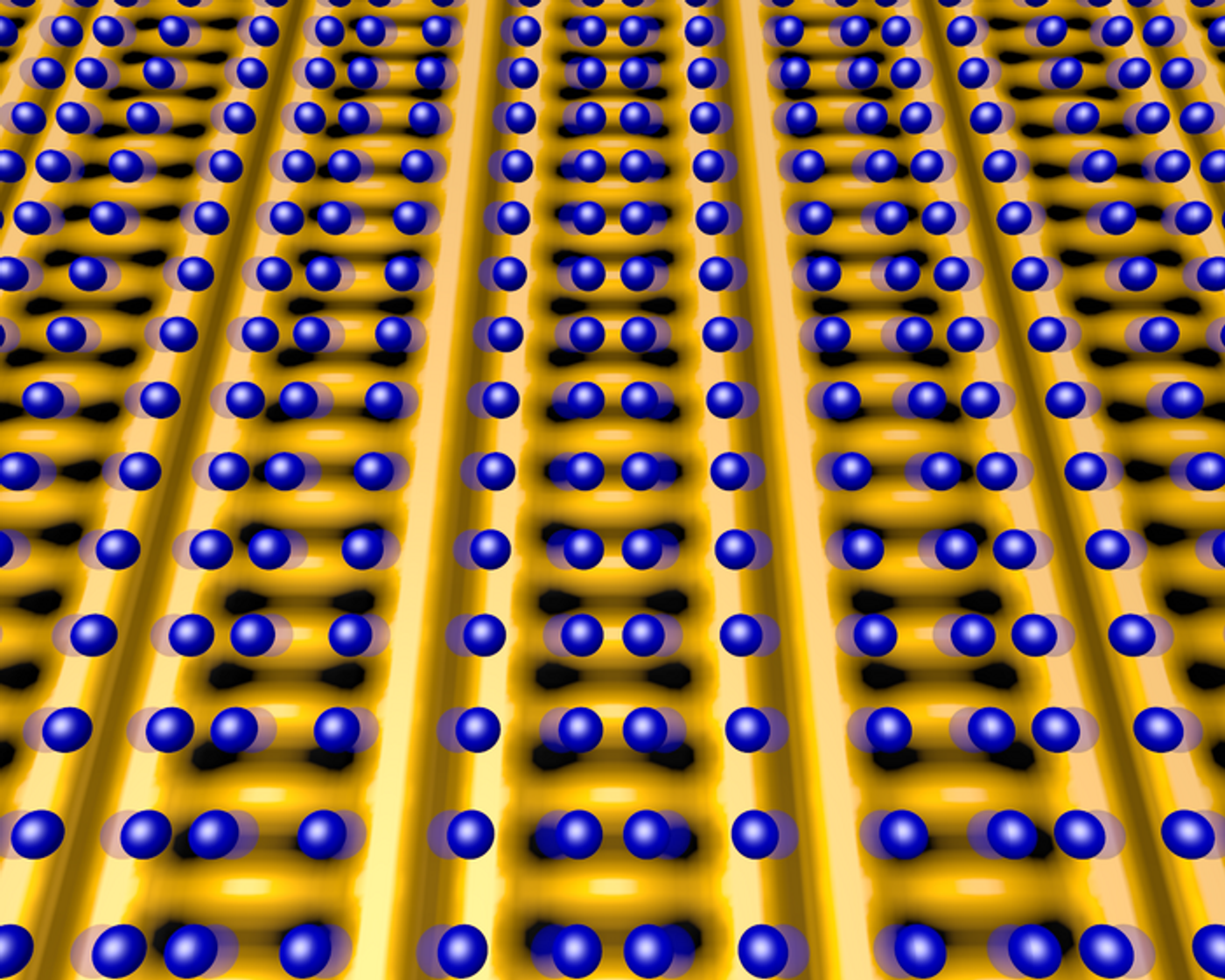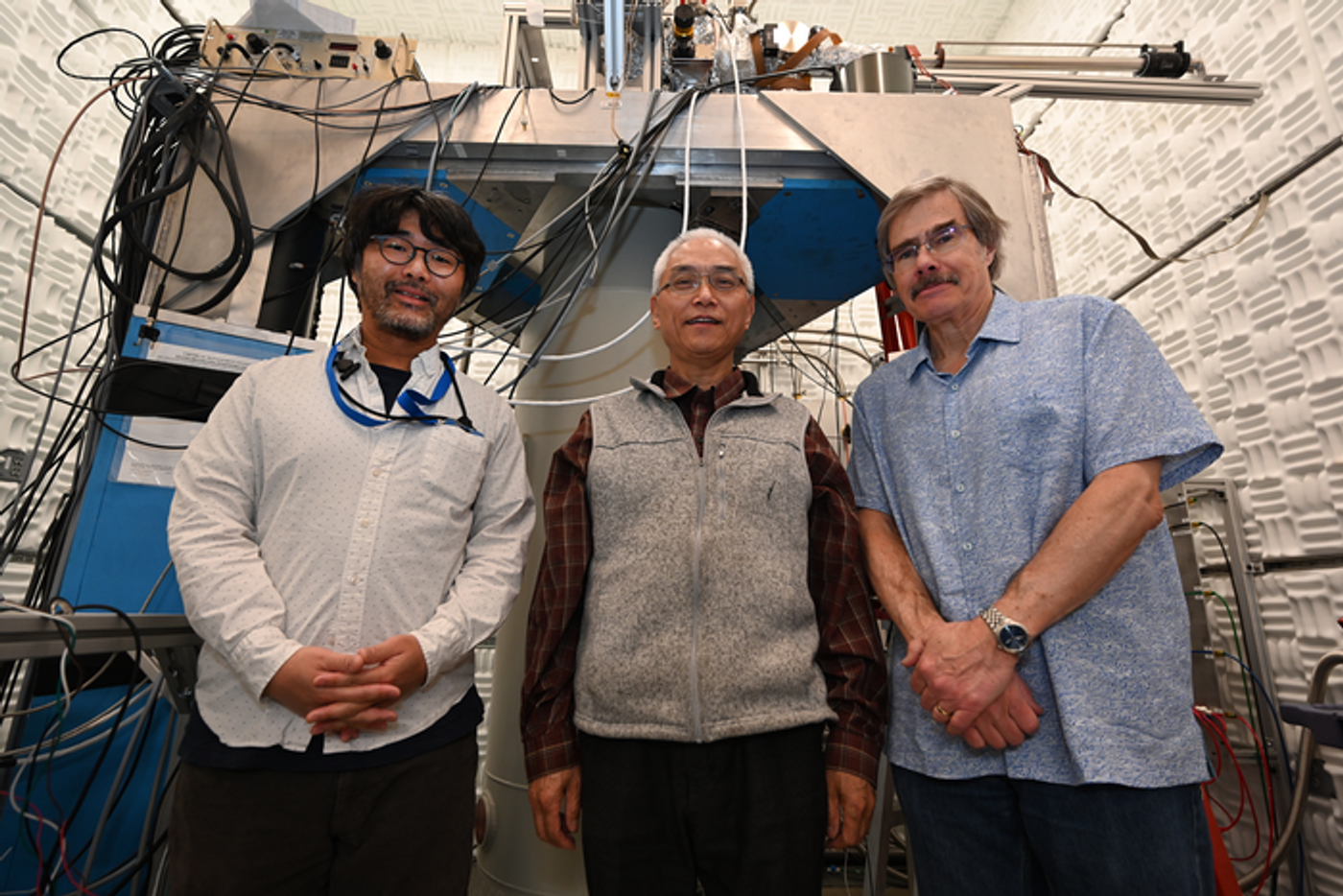Unraveling the Properties of Superconductivity
Advances in energy-saving advances, more efficient power lines, and super-fast computers could come from a recent study published in Physical Review X as a team of researchers examined how to unravel the properties of superconductivity, which is a material’s ability to hold current without losing energy when subjected to lower temperatures. The primary goal for these materials is to better understand their characteristics when they’re not superconducting.
One goal of the study was to better understand how an atom’s vibrational energy within a certain material’s crystal lattice seems to disappear, in this case a copper-oxide semiconductor.
Image of atoms (blue spheres) and their vibrations (shadows) that comprise a copper-oxide semiconductor’s crystal lattice on top of a map of electronic charge distribution (high charge density is yellow, low is dark spots). (Credit: Brookhaven National Laboratory)
“To solve the problem, we need to understand the many phases of these materials,” said Dr. Kazuhiro Fujita, who is a physicist in the Condensed Matter Physics & Materials Science Department at the U.S. Department of Energy’s Brookhaven National Laboratory, and a co-author on the study.
For the study, the researchers scanned a layered material’s surface with an accuracy up to a trillionth-of-a-meter using a spectroscopic imaging scanning tunneling microscope (SI-STM) to map and measure atoms and their respective distance between each other and measure their electric charge, as well.
Study co-authors Kazuhiro Fujita, Genda Gu, and John Tranquada with the spectroscopic imaging scanning tunneling microscope (SI-STM) (background) used in this study. (Credit: Brookhave National Laboratory)
The researchers were not only able to measure the positions of the vibrating atoms, but also how the atom’s behavior changed when the vibrations stopped—they not only changed positions but became locked in that new position. The researchers also discovered that a phenomenon called “charge density wave” was responsible for the vibrations stopping, as well.
“As the temperature goes down and the charge density wave (CDW) emerges, the vibrational energy goes down,” said Dr. Fujita. “By measuring both charge distribution and atomic structure simultaneously, you can see how the emergence of the CDW locks the atoms in place.”
“This result implies that, as the atoms vibrate, the charge density wave interacts with the lattice and quenches the lattice. It stops the vibrations and distorts the lattice,” Fujita said.
While the study’s findings were promising, Dr. Fujita said there’s still a lot to learn about these favorable materials.
As noted, superconductivity holds promise for several applications, with additional applications being smaller and lighter engines for turbines and ships, improved magnetic imaging (MRI) equipment, and levitating trains. Along with their energy-saving properties, superconductors also can create magnetic fields known as the “Meisner Effect”. Overall, superconductivity can have an extremely positive impact on the environment, so better understanding their properties holds the potential for a cleaner future.
What new discoveries will scientists make about superconductivity in the coming years and decades, and how will this emerging technology impact the environment? Only time will tell, and this is why we science!
Sources: Physical Review X, U.S. Department of Energy, Brookhaven National Laboratory, Arizona State University, Inmensol, Britannica
As always, keep doing science & keep looking up!










